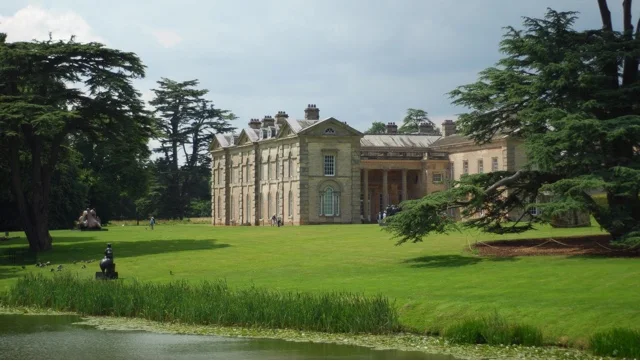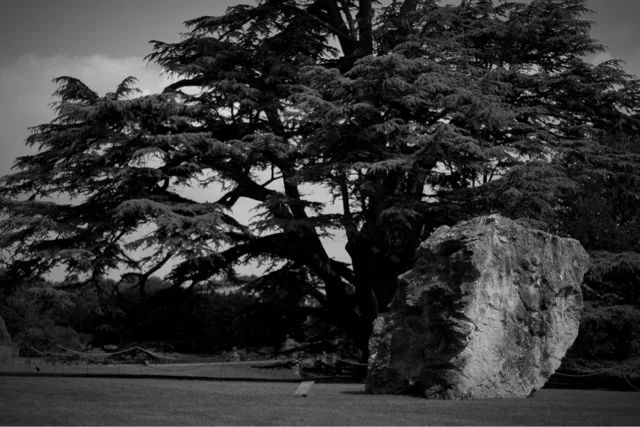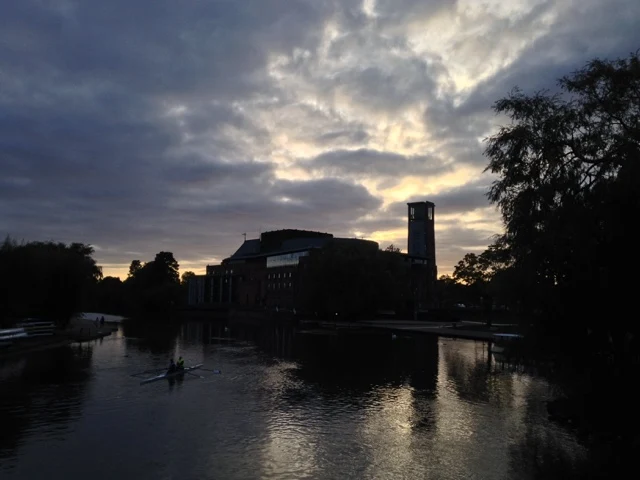I wrote the other day that “Music used to be my drug. Now, it is words….” This doesn’t mean that I am not still addicted to the “moody food Of us that trade in love” – just that, as my hearing slithers down the audiological scarp, I have to find different ways to satisfy my craving.
At home, I increasingly listen to works that have sparse orchestration – especially chamber music: and particularly string quartets (my favourites being Bartók’s: which I can easily listen to, straight through, over and over again, for hours, discovering something new every time; and which is why I have so many different recordings…). And it is becoming readily apparent that, from such experiences, something wicked this way can come. (Sorry, Will.)
This was made clear (ahem) to me, at the recent Orchestra of the Swan Battle of Agincourt ‘entertainment’: where the instrumentation demonstrated “the purity and strength of a small ensemble” – which was bright music to my dull ears. I could discern every instrument, every line of the score: especially, when, in the second half, of OOTS’ usual string section, only the cellos remained. (The harmonics – a subset of overtones – which even a medium-sized group of stringed instruments produce – and especially at the ‘top end’ of what is left of my range – can easily confuse both my hearing aids and what’s left of my brain’s interpretative ability.)
One of the other ways I can experience music fully is through a learned familiarity with it; or a reading of the score. So, hoping to prove that my enjoyment of a single concert wasn’t just a fluke – but with a mixed, pessimistic strain of esperance (and fingers crossed, whilst touching wood; but not wearing my clothes inside out…) – I booked tickets for the final concert of the Stratford on Avon Music Festival: Eboracum Baroque (above, in rehearsal) presenting a lovely selection of Handel, Purcell, and Vivaldi.
Apart from the overture – to Atalanta, “the most festive and idyllic of Handel’s operas” – I had either sung, played in, or conducted, all of the programmed pieces. However, I have to be honest, and stress that none of my interpretations could even have reached base camp of the towering peak – revealing new aspects and associations with almost every bar – generated by “some of the most promising young singers and musicians around today”. (If an absolute measure of the greatness of a performance is how motionless I remain during it – and the consequent increased pain and stiffness, the following day – then, on Sunday morning, I was sorely in need of the services of Aphrodite. As well as a new book of superlatives….)
I could spend as much time as the length of the concert itself trying to describe just how wonderful it was… – but, instead, here are a few of the highlights….
One of the key attributes (for me) of any directed group of musicians (even when small in number) is the attention everyone pays (or should) to the conductor (although I could be biased). It may not always be readily apparent from observing the performers’ faces: but it was obvious on Saturday evening that the members of Eboracum Baroque – and especially when the choir came on stage after the overture – are incredibly cohesive and attentive: to each other, as well as to engaging director Chris Parsons (below). There was an instant and perfect control-and-response in dynamics and tempi of both instrument and voice. Truly astounding – a quality that reflected an innate flexibility; as well as collegiate respect, engagement and enjoyment.
The maturity of the voices – for an ensemble only formed three years ago at the University of York – was particularly glorious: but I was especially taken with the richness of bass John Holland-Avery (and I don’t think a comparison with Samuel Ramey is out of order, here) and countertenor Mark Williams – whose astonishing knee-weakening purity and heart-stopping range in Purcell’s Sound the trumpet caught me completely off-guard. (The obvious analogue would probably be Andreas Scholl – but, to me, here is another James Bowman in the (already almost fully-fledged) making.) The female soloists – Lottie Bowden, Amber Rutterford, and Naomi Sturges, sopranos; and Alexandra Osborne, contralto – also seem to have been born with voices and technique perfectly-honed. It’s just a shame we didn’t have a tenor solo, as well: as their paired voices also sounded keen and flawless, just like their colleagues’ – especially during Vivaldi’s Gloria (“his most popular choral work”), which ended the evening.
It may have helped that the group had the perfect setting in Holy Trinity – although I was sat near the front; and I know from experience that the acoustics can suffer, becoming a little woolly, further down the aisle. It was just a shame the audience was so, erm, exclusive. (“But we in it shall be rememberéd – We few, we happy few….”)
At the Agincourt concert, The Good Lady Bard had expressed concerns about the average age of the audience (a familiar shared lament arising from regular attendances at Wigmore Hall): asking who will come to such events in the future? But, after seeing Eboracum Baroque, I do not think we need worry: these youngsters (and this is a laudatory description that reflects more on my age than theirs…) “at the start of their professional careers” prove that there is an excellent, guaranteed future for classical music – not only in their mature voices, but through their well-developed, well-informed attitude to its performance and presentation.
I think it also bodes well that, like David Curtis, artistic director of the Orchestra of the Swan, Parsons takes time to talk informally to the audience. This added to the involvement – especially when we had a quick and light-hearted impromptu tour around the instruments being played: explaining their rôles, as well as introducing the performers (“And, tonight, on chamber organ…!”) – and demonstrated how much fun there is to be had, even when performing serious, intensely religious works (although Christopher Hogwood proved long ago that, as with this concert, music performed on such ‘original instruments’ can be utterly emotionally engaging, for both performers and audience).
In conclusion, I would therefore recommend that you order their new CD – hopefully the first of many – as soon as you can: and experience Eboracum Baroque’s enveloping warmth and utter professionalism for yourself – revelling in music that engages the heart and the brain with perfect beauty and spotless accuracy. Utterly, utterly irresistible.




















































